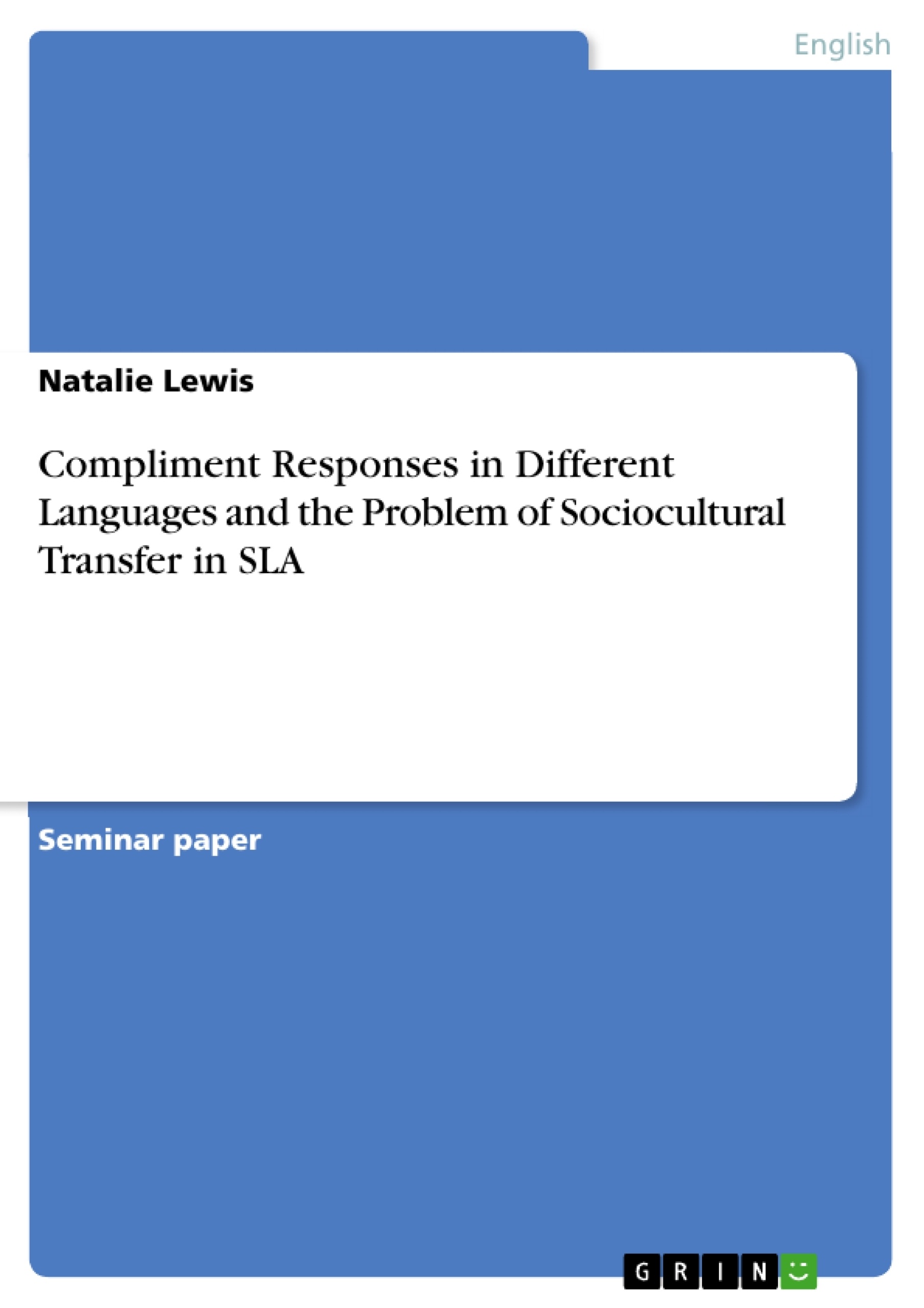In most speech communities, the speech act of complimenting is a well established politeness strategy. While the giving of and responding to compliments can be regarded as rather universal across different languages and cultures, the form, frequency and function of compliments and compliment responses significantly varies. In the following chapters, I would like to compare English compliment responses to realizations of the same speech act in Chinese and German. Since the 1970s, sociolinguists have turned towards research on communicative competence, thereby focussing on native speaker’s performance of speech acts (e.g. compliments, apologies, requests, complaints etc.). In the last three decades, the speech event of complimenting and compliment responding has been one of the major areas on which sociolinguistic research has focussed on. There are extens ive studies on this respective speech act in American English (e.g. Pomerantz 1978, Manes and Wolfson 1980) as well as comparative cross-cultural research on complimenting behavior, examining the differences in speech act realization between variants of English (American /Irish , e.g. Schneider 1999; American /South African, e.g. Herbert 1989), and between English and other languages (Chinese, e.g. Chen 1993; German, e.g. Golato 2002). These studies of communicative competence make apparent that communicating effectively and efficiently in a language requires more than just linguistic knowledge; the ability to use this linguistic knowledge appropriately in the given sociocultural context is also essential. Learners with insufficient pragmatic knowledge frequently transfer patterns from their native language into the foreign language. Second language teaching profits from studies in communicative competence because it provides teachers with information on realization strategies concerning certain speech acts in different languages.
Table of Contents
- Introduction
- American English Compliments
- Compliment Responses Strategies in American English
- Compliment Response Strategies in Chinese
- Compliment Response Strategies in German
- Sociocultural Transfer in SLA
- Teaching Sociocultural Competence
- Conclusion
Objectives and Key Themes
This paper examines the speech act of complimenting and its responses in various languages, focusing on American English, Chinese, and German. The objective is to compare the different strategies used in these languages for complimenting and responding to compliments. The paper also investigates the role of sociocultural transfer in second language acquisition (SLA) and explores the importance of teaching sociocultural competence.
- Cross-cultural differences in complimenting and compliment response strategies
- Sociocultural transfer in SLA
- The role of pragmatic knowledge in effective communication
- The importance of teaching sociocultural competence
- The relationship between linguistic knowledge and sociocultural context
Chapter Summaries
- Introduction: The paper introduces the speech act of complimenting as a politeness strategy and discusses its varying forms and functions across languages and cultures. It highlights the importance of studying communicative competence in second language acquisition and the role of sociocultural transfer.
- American English Compliments: This chapter provides an overview of complimenting in American English, its structure, and its function as a positive politeness strategy. It explores the lexical and syntactic patterns used in American English compliments, as well as the common topics of compliments.
- Compliment Responses Strategies in American English: This chapter examines the different strategies used in American English to respond to compliments, including the common practice of thanking and other less conventional responses. It explores the reasons for the variety of response strategies and the social factors that influence compliment responses.
- Compliment Response Strategies in Chinese: This chapter compares and contrasts the strategies used in Chinese for responding to compliments with those used in American English. It explores the cultural and linguistic factors that contribute to the differences in compliment responses.
- Compliment Response Strategies in German: This chapter examines the strategies used in German for responding to compliments, comparing them to those used in American English and Chinese. It explores the cultural and linguistic factors that influence compliment response strategies in German.
Keywords
The main keywords of this work are complimenting, compliment responses, sociocultural transfer, second language acquisition (SLA), communicative competence, pragmatic knowledge, American English, Chinese, German, cross-cultural communication, politeness strategy.
- Citation du texte
- Natalie Lewis (Auteur), 2003, Compliment Responses in Different Languages and the Problem of Sociocultural Transfer in SLA, Munich, GRIN Verlag, https://www.grin.com/document/23876



